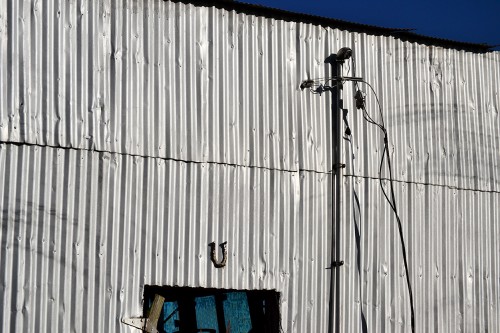 I was in Dutchtown the other day and decided to drive down the lane that separates our property from the neighbor to the south. It contains about half a dozen pecan trees that Mother and I used to like to visit at this time of year. Most of the nuts she was cracking here in 2012 came from those trees.
I was in Dutchtown the other day and decided to drive down the lane that separates our property from the neighbor to the south. It contains about half a dozen pecan trees that Mother and I used to like to visit at this time of year. Most of the nuts she was cracking here in 2012 came from those trees.
In the dozens of times I’ve gotten to this old building and turned around, I had never noticed the horseshoe above the door. (Click on the picture to make it larger.)
Why is a horseshoe lucky?
Wikipedia theorizes: Horseshoes have long been considered lucky. They were originally made of iron, a material which was believed to ward off evil spirits, and traditionally were held in place with seven nails, seven being the luckiest number.
The superstition acquired a further Christian twist due to a legend surrounding the 10th century saint Dunstan, who worked as a blacksmith before becoming Archbishop of Canterbury. The legend recounts that, one day, the Devil walked into Dunstan’s shop and asked him to shoe his horse. Dunstan pretended not to recognize him, and agreed to the request; but rather than nailing the shoe to the horse’s hoof, he nailed it to the Devil’s own foot, causing him great pain. Dunstan eventually agreed to remove the shoe, but only after extracting a promise that the Devil would never enter a household with a horseshoe nailed to the door.
Which way should it point?
The LuckyMojo website says it depends on where you’re from: In most of Europe, the Middle-East, and Spanish-colonial Latin America protective horseshoes are placed in a downward facing or vulval position, but in some parts of Ireland and Britain people believe that the shoes must be turned upward or “the luck will run out.” Americans of English and Irish descent prefer to display horseshoes upward; those of German, Austrian, Italian, Spanish, and Balkan descent generally hang them downward.
In regions where the horseshoe is placed facing upward, folks believe the horseshoe must point up “or the luck runs out.” In places where it is hung facing downward they say exactly the opposite — “it must point down so the luck can pour onto you.” However, in its function as an amulet for magical protection, especially over the doorways of barns and stables, the horseshoe usually points downward and it is said that “no witch will pass under it.”
What does the difference in directionality mean? I think that in most of the world it is the horseshoe ITSELF that is lucky and protective — whereas in England and Ireland the horseshoe is seen as a mere “collector” of luck from above. There are other regional and cultural differences in horseshoe beliefs, too:
In Italy, for instance, when a horseshoe is nailed by the side of the door (not above it), directionality is not considered important, but what IS important is that the horseshoe was actually used — worn and discarded by a horse — that it was found in the road or in a field, not purchased, and that the person who enters the door can touch it.
